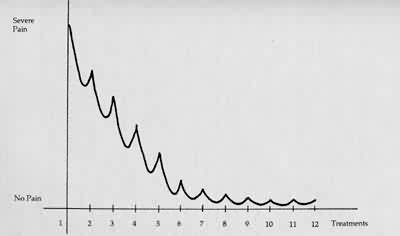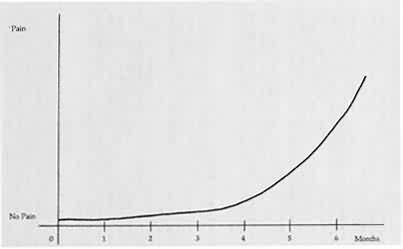Basic Theory of Traditional Chinese Medicine
What is Chinese Traditional Medicine?
China is one of the oldest countries on this planet. During the past 5000 years history of China, the main and only medicine of Chinese people is Traditional Chinese Medicine, which now is known as acupuncture and Chinese traditional herbal medicine in Western Countries.
In fact, acupuncture and Chinese herbal medicine are only two main techniques of Chinese traditional medicine, which also includes other treatment methods as Qigong, Taiji and Chinese Massage.
What is the difference of Chinese traditional medicine and Western medicine?
Well, this question is very complicated. Basically, the outline of Chinese traditional medicine is very different from conventional Western medicine. In the treatment of a patient, Chinese traditional medicine will use some techniques as acupuncture, herbs, cup, massage and maybe even bleeding.
These techniques are so different from conventional Western medicine that some scientists or Medical doctors did not think Chinese traditional medicine is a reasonable science before.
But if you take a insight of Chinese traditional medicine, you will find Chinese traditional medicine is a logical and reasonable science with real scientific spirits, just like Western medicine.
Some medical scientists think the difference of Chinese traditional medicine and western medicine is that Chinese traditional medicine is based on an obscure theory, especially based on the ancient pure philosophy and long practice experience, but the western medicine is based on clear calculation as modern anatomy, physiology, pharmacology and so on.
How can these ancient medical methods cure some serious diseases?
In Asia countries as China, Japan and Korea, this is not a question. Because Asia people have used Chinese traditional medicine as the unique medicine during the past thousands of years, so in their minds, there is no doubt at all if Chinese traditional medicine can cure diseases or not.
But for most Western people, it is not easy to make them believe that Chinese traditional medicine is a real science since it is so different from their past experience.
In fact, just like other sciences, Chinese traditional medicine is also a science, although it is very old, it is also young in Western countries. Along with the modern research on Chinese traditional medicine, there are more and more western people begin to learn it, accept it and believe it is a effective medical science.
To some serious diseases, such as chronic pain, auto injury, cancer, stroke, asthma and so on, the treatment of conventional western medicine is very limited or with a lot of side effects. These limits make the ordinary patients choose to try the Chinese traditional medicine. After these patients used acupuncture, herbal medicine or other Chinese medical methods, they find Chinese traditional medicine really works.
After all, Chinese traditional medicine is one kind of the most ancient medicines, there are still a lot of projects of it need to be researched. Some treatment effects to some kind of diseases still can not be explained by modern science. But we do know some scientific mechanism of Chinese traditional medicine, after nearly 50 years modern research on it, which have been conducted not only in China and Japan, but also in USA and other western countries. That is why there are more and more western people accepting this ancient medicine and the legislation of USA set up some Acts to regulate this ancient medicine. At present, most of US health insurance companies begin to cover the cost of Acupuncture.
What is the reason that acupuncture can work?
The Chinese state that if acupuncture is to achieve its maximum effect it is necessary for the acupuncturist to obtain a 'needling sensation', over each acupuncture point that is used. This involves the needle being moved slightly while it is in the skin, and the sensation experienced by the patient will vary. Needling sensation is not painful but it is a dull, bursting or numb sensation around the site of the inserted needle. The sensation may also travel up or down the channel being treated; the stimulation of an acupuncture point on the right knee may precipitate the experience of a strange burning or numb sensation in the right ankle. Needling sensation is probably best defined by the statement, 'When needling sensation is experienced the needle no longer feels like a needle!'
Some acupuncturists use an electrical stimulator to excite acupuncture points as a substitute for obtaining needling sensation. Electro-acupuncture causes a tingling sensation over the acupuncture points that are being stimulated, but the Chinese believe that this does not replace the need to obtain needling sensation. If the stimulator is mistakenly turned to a very high intensity then the patient will experience some discomfort, so it is wise to be cautious when using electrical stimulators, and to adjust the intensity slowly and carefully
Another common misconception is that patients must 'believe' in acupuncture to enable it to work. This is similar to the idea that acupuncture is a complex form of suggestibility, but this is quite wrong. Like any other type of medicine acupuncture works on those who believe in it and those who do not. The mechanism of acupuncture is not clearly understood but, as has already been mentioned, it is quite clear that reproducible biological changes occur when an acupuncture needle penetrates the skin. Whilst accepting that all medical treatment is more effective if the doctor is trusted by the patient, this trust is not a prerequisite for the physiological changes that occur during and after acupuncture.
Patient's Response to Acupuncture treatment
It is very difficult to be dogmatic about how a patient will respond to acupuncture. Occasionally, one treatment is all that is required, whilst other people may need a number of treatments to gain the same result for the same disease. In general most people, and their problems, do not respond magically to one treatment, and between four and eight treatment sessions may be required in order to obtain the best results from acupuncture.
Acupuncture usually works in stages. The first two or three treatments represent a process of 'understanding the needs of the patient', and are therefore a sort of experiment designed to assess the specific requirements for that person in that particular condition. Some people respond to classical Chinese body at puncture, whilst others respond better to ear acupuncture. This partially reflects the skill of the acupuncturist in the use specific techniques, but it also represents the fact that the body responds in a slightly different way to slightly different stimuli. Some people seem to respond to a particular acupuncture technique for one condition, whilst requiring a completely different technique for another complaint. A patient may even respond to a particular approach for a specific condition and then stop improving half way through treatment, thus necessitating an alternative approach to that condition.

If a patient experiences some symptomatic improvement at the first consultation, then they often gain considerable relief from a course of acupuncture; equally, many people who do not obtain symptomatic improvement at the first consultation may also gain a great deal from acupuncture. It is a good prognostic sign if there is some instant improvement, although the improvement gained at the first consultation rarely lasts longer than a few hours, and may last only a few minutes. Each subsequent treatment should then give a better and more prolonged result and, as shown on the graph, the symptoms should gradually disappear as the treatment becomes effective.
Three treatments should be adequate to assess whether a patient will respond to acupuncture. If there has been no response to treatment after the first three sessions then it is doubtful whether any response will occur. This should be taken as a general guideline and not as an unbreakable rule as sometimes the symptoms of a particular condition may be very fluctuate, and it may be difficult to obtain a clear assessment of the results of treatment. Occasionally the patient may not find it easy to remember exactly what the condition was like three weeks before and this too can create difficulties, so it is wise to keep a diary and assess day by day the changes that are arising in the problem being treated. This will allow the patient and the acupuncturist to develop a clear idea of the response to treatment, and to assess whether the treatment is worthwhile.
Most acupuncturists continue to treat a patient until there is no further improvement in their condition. The response, as shown by the graph, tends to 'level off' towards the end of treatment (usually after five or six treatments) and this 'leveling off' signifies that further treatment will probably not give further benefit. Acupuncturists in the West tend to treat people on a weekly basis; in China treatment is given daily, but this seems to be more from habit rather than for any good medical reason. Weekly treatments allow both patient and acupuncturist to gain a clear assessment of the progress and response to treatment.
Some reactions to Acupuncture you should know
Sometimes a patient may experience a temporary worsening of symptoms due to acupuncture; this is a response to treatment and is a good sign. Such 'reactions' to treatment only last for a short time, perhaps a day or two, and are usually followed by improvement. A 'reaction usually means that the acupuncture needles have been over stimulated as some patients are very sensitive to acupuncture and may respond to normal stimulation by overreacting. If a 'reaction' occurs, the patient should be stimulated less at the next treatment session, this means giving a shorter and less aggressive treatment. Sometimes the improvement may be very delayed and the condition may not improve until the treatment has ceased. Occasionally patients who have been abandoned, with no improvement after three weeks, will suddenly find improvement some weeks after the acupuncture has ceased.
Although I have outlined general guidelines about the response to treatment it is important to take each problem as it arises. The general rules are not always obeyed, and if they are followed too dogmatically then the versatility of acupuncture may be lost.
Cure or Symptom Relief?
Acupuncture can be a cure, or it can act as a palliative treatment; this depends on the condition that is being treated. If a chronically painful arthritic knee is treated with acupuncture then, on average, the improvement will last about six months and the knee will then require re-treatment. Some acupuncturists treat their patients every three months or so to avoid any deterioration in their condition. The traditional Chinese approach is to attempt to maintain the patient in a state of health and a regular three-monthly treatment pattern is therefore justified; however, many acupuncturists just treat patients when the symptoms recur. If the condition is self-limiting, such as the pain from an attack of shingles, then no further treatment is required after the pain is relieved.
Whole Body Therapy
In the West the vast majority of people look upon acupuncture as an alternative treatment for pain; therefore pain is the most frequently presented complaint at an acupuncture clinic. If the patient is approached from the traditional Chinese viewpoint then the body is treated as an integrated system. People in pain frequently have other complaints, such as heartburn or

depression, and if the body is treated as a complete system then these complaints will also be treated, and often resolve during the course of acupuncture. The patient may be quite surprised to find that some other problem has suddenly improved, as it was not realized it was amenable to acupuncture treatment and therefore not mentioned to their acupuncturist.
|
